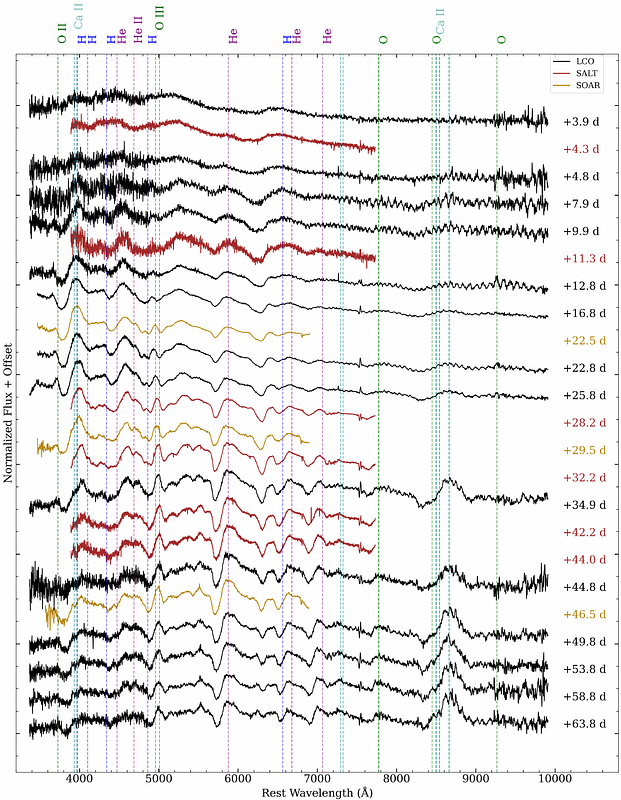Early Shock-Cooling Observations and Progenitor Constraints of Type IIb SN 2024uwq

Early Shock-Cooling Observations and Progenitor Constraints of Type IIb SN 2024uwq
Bhagya M. Subrayan, David J. Sand, K. Azalee Bostroem, Saurabh W. Jha, Aravind P. Ravi, Michaela Schwab, Jennifer E. Andrews, Griffin Hosseinzadeh, Stefano Valenti, Yize Dong, Jeniveve Pearson, Manisha Shrestha, Lindsey A. Kwok, Emily Hoang, Jeonghee Rho, Seong Hyun Park, Sung-Chul Yoon, T. R. Geball, Joshua Haislip, Daryl Janzen, Vladimir Kouprianov, Darshana Mehta, Nicolás Meza Retamal, Daniel E. Reichart, Moira Andrews, Joseph Farah, Megan Newsome, D. Andrew Howell, Curtis McCully
AbstractWe present early multi-wavelength photometric and spectroscopic observations of the Type IIb supernova SN 2024uwq, capturing its shock-cooling emission phase and double-peaked light curve evolution. Early spectra reveal broad H-alpha (v ~ 15,500 km s$^{-1}$) and He I P-Cygni profiles of similar strengths. Over time the He I lines increase in strength while the H-alpha decreases, consistent with a hydrogen envelope ($M_{env}$ = 0.7 - 1.35 $M_\odot$ ) overlying helium-rich ejecta. Analytic modeling of early shock cooling emission and bolometric light analysis constrains the progenitor to a partially stripped star with radius R = 10 - 60 $R_\odot$, consistent with a blue/yellow supergiant with an initial ZAMS mass of 12 - 20 $M_\odot$ , likely stripped via binary interaction. SN 2024uwq occupies a transitional position between compact and extended Type IIb supernovae, highlighting the role of binary mass-transfer efficiency in shaping a continuum of stripped-envelope progenitors. Our results underscore the importance of both early UV/optical observations to characterize shock breakout signatures critical to map the diversity in evolutionary pathways of massive stars. Upcoming time domain surveys including Rubin Observatory's LSST and UV missions like ULTRASAT and UVEX will revolutionise our ability to systematically capture these early signatures, probing the full diversity of stripped progenitors and their explosive endpoints.